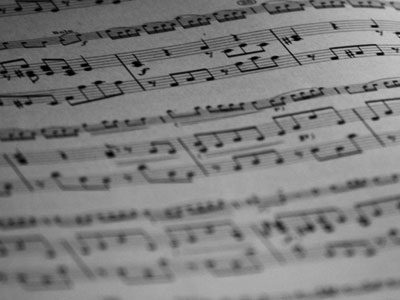STEVE REICH: Electric Counterpoint
(Arranged for marimba by Jacob Nissly)
New York-based composer Steve Reich is one of the most recognizable first-generation Minimalists—and a trained percussionist. His Electric Counterpoint (1987) captures the bold dynamism of the era.
Steve Reich’s virtuoso sonata, Electric Counterpoint (1987), is part of a trilogy of works that make use of recorded superimposition, which feature a soloist performing against pre-recorded tape. Against a recording of as many as ten voices and two bass lines, SF Symphony Principal Percussion Jake Nissly performs the final (eleventh) voice of the work live on stage, music that is based on a theme that Reich derived from Central African horn music.
Composed in three movements, fast—slow—fast, and played without pause, Electric Counterpoint at once builds and distills an evolving melody. There is a certain dark harmony and evidence of more chromatic modes in this piece, which come together to create a unique melodic somberness. The imitative, layered, and metric displacements are harmonic as well as rhythmic, and the repeating frame pulsates with different tensions, balances, and points of repose. Adding to the electric experience, Jake transcribes this complex shroud of voices for marimba at these performances.
APPLEBAUM: Aphasia
Visual and theatrical elements abound in Applebaum’s works—like in his Aphasia, written for a mute "singer" performing synchronized, choreographed hand gestures to tape. The work brilliantly captures Applebaum’s absurdist side—but is a realization of the composer’s real obsession with “expressive paralysis.” Aphasia comprises a sound sequence of hundreds of radically manipulated and mangled sounds made by baritone Nicholas Isherwood. Putting sound to score, Applebaum records the gestures using icons with names such as "give me the money" and "post-it notes." (Details on the SoundBox screens)
The visual score’s painstaking detail intimate the composer’s fascination with "absurdity that is the consequence of tedious, obsessive attention to ridiculous things." Enjoy this break from convention. Here, context, or the lack thereof, is everything. Frequent Applebaum collaborator Steven Schik performs Aphasia at these performances.
LEI LIANG: Trans
Make space in the SoundBox for Lei Liang’s atmospheric piece, Trans. Short for “transience—transmutate—transcribe—transfigure—transform—trance,” this piece is written for solo percussionist… oh, and you. Throw your hands in the air and grab some rocks. These performances are led by one of the work's most notable champions, Steven Schick, who asks that you make use of the rocks provided at SoundBox to form “sonic clouds” around his live performance. Within and among these clouds we find Schick forming his own sonic space using both Eastern and Western cymbals. Unsure of what is happening around you? Never fear, Trans simply requests that we try to experience three states of mind: outward space, inward space, immovable space.
GUO WENJING: Parade (Xiang)
A composer who frequently explores major elements of traditional Chinese folktales, Guo Wenjing’s Parade is a fascinating trio for three percussionists. Among his most performed chamber works, Parade follows the composer’s earlier work, Drama, which imitates the sound of a Chinese drama. Its sequel, Parade, carries the dynamism as the percussionists gather their instruments to offer audiences a fascinating, multi-malleted rhythmic and sonic experience.
STEVE REICH: Clapping Music
In this virtuoso Minimalist piece, one handclapper stays faithful to the original beat pattern while the other handclapper, shifting accents one at a time, gradually departs from it, an eigth-note at a time. The two performers continue this until the second performer has shifted twelve 8th notes and is playing the pattern in unison with the first performer again.
OSVALDO GOLIJOV: Mariel
The Argentine composer offers these comments on Mariel:
"I wrote this piece in memory of my friend Mariel Stubrin. I attempted to capture that short instant before grief, in which one learns of the sudden death of a friend who was full of life: a single moment frozen forever in one's memory, and which reverberates through the piece, among the waves and echoes of the Brazilian music that Mariel loved.”
CAGE: Third Construction
Third Construction is the pinnacle of John Cage’s innovative percussion ensemble writing. It is his final work in this medium, and perhaps his most complex and mature. Many Mexican, Central American, and Native Indian instruments are used, including Quijadas, cricket callers, conch shell, and rattles. Other unusual instruments, such as graduated tin cans, play a prominent role in the work. Both the rhythmic shape and the overall structure of the piece are related to Cage’s “square root theory,” in which components of various relationships within a piece reflect the numeric proportions of the square root. In Third Construction there are twenty-four sections, each in turn divided into twenty-four bars. In addition, there is a twenty-four bar introduction. This proportional writing is extended to Cage’s elaborate use of cross-rhythmic relationships among the individual parts. This builds toward the end of the sections, where up to four sub-divisional flows (of 3, 5, 7, and 9) are played simultaneously.
In short, this piece is awesome.

